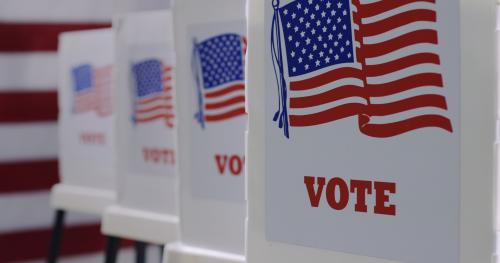Six years have elapsed since enactment of the Affordable Care Act (aka Obamacare). By most indicators, it has been a smashing success, despite some acknowledged problems. Yet surveys report that a plurality of Americans have an unfavorable opinion of the law. The presidential election will help determine whether or not the shortcomings are fixed and health insurance coverage continues to grow. If adopted by Congress, Clinton’s agenda would provide added coverage for an estimated 9.6 million people, while Trump’s would eliminate coverage for 20 million. These numbers indicate the health policy stakes in the election.
The evidence of success is pervasive. The program promised to increase insurance coverage. It has done so. In the five years before enactment of the ACA, the number of Americans without health insurance rose by 6.9 million. In the five years after enactment, the number of people without health insurance fell by 21 million and the proportion without insurance dropped from 15.1 to 9.4 percent.
In the five years after enactment, the number of people without health insurance fell by 21 million and the proportion without insurance dropped from 15.1 to 9.4 percent.
Designers of the ACA promised that it would help slow the growth of heath care spending. The share of GDP devoted to health care spending rose by 0.5 percentage points from 2010 through 2015, as the economy recovered from the Great Recession. From 2002 to 2007, also a period when the economy was also recovering from a recession, health care spending as a share of GDP rose twice as much, by 1.1 percentage points. To be sure, forces other than the ACA also helped hold down the growth of health care spending. But any slowing at all is remarkable because the ACA was sharply increasing the number of people with health insurance—and, therefore, with the means to pay for health care.
Then there is the quality of care, something that is far more difficult to measure and document than coverage and costs. Perhaps for that reason, supporters of the Affordable Care Act have always talked more about increasing coverage and slowing spending growth than about the several provisions of the law designed to improve the quality of health care. But progress has been made on the quality front, too. Hospital readmission rates had been falling gradually even before enactment of Obamacare, but in the two years after the ACA was enacted, the rate of decline increased six-fold. To be sure, the United States has a long way to go in assuring high-quality care, but credit is due for real progress.
This record of success notwithstanding, a narrow plurality of adults continue to say they have a generally unfavorable opinion of Obamacare. As on so many other issues, opinions are divided sharply by race/ethnicity. A majority of whites have an unfavorable opinion, but a majority of blacks and Hispanics have a favorable opinion of Obamacare. This reaction is, perhaps, unsurprising, as the drop in the percentage of blacks without health insurance from 2010 to 2015 was two times larger than that for whites and three times larger for Hispanics than for whites.
A majority of whites have an unfavorable opinion, but a majority of blacks and Hispanics have a favorable opinion of Obamacare.
The reasons why performance and perception are so far out of whack are not hard to find. For starters, the fight over Obamacare was uniquely partisan. Not a single Republican in either House of Congress voted for its passage; not a single Senate Democrat voted against its passage. In contrast, members of both parties crossed party lines far more during past votes on Social Security, Medicare, and Medicaid under both Democratic and Republican administrations. The partisan split is all the more striking because the core element of Obamacare—the mandate that individuals carry health insurance—originated with conservative analysts and had been embodied in draft legislation sponsored by Republicans.
Second, opponents of Obamacare have fielded some weirdly exaggerated allegations about dire consequences that would flow from the health reform law. Perhaps the most outrageous draft legislation entitled ‘Repealing the Job-Killing Health Care Law Act’ introduced in 2011 by the Republican House Majority leader, Eric Cantor, with 182 co-sponsors, that was passed by the House 245 to 189. As no vote was taken in the Senate, the bill did not become law. If Obamacare killed jobs, as was the premise of the bill, the ACA did a remarkably poor job of it. Since enactment of the ACA in March 2010, the unemployment rate has fallen from 9.7 percent to 4.9 percent in August 2016. Employment increased by 12.7 million over this period. Other allegedly malign effects feared by critics, such as overload of the delivery system from increased demand for health care, have also not materialized.
While the ACA has been indisputably successful in achieving its larger goals, any legislation that fundamentally changes a $3 trillion chunk of the U.S. economy is bound to contain some mistakes and to run into some policy potholes.
Among the mistakes is a drafting error, the so-called ‘family glitch,’ that bars some employees who want insurance for their families from access to the health insurance exchanges and to subsidies to help make insurance affordable.
In addition, several insurers have encountered a significant pothole. They found that they were losing money on sales within the health insurance exchanges and decided to stop selling insurance through them. These losses have occurred in part because insurers are unaccustomed to operating under rules that bar them from setting widely varying premiums to individual insurance purchasers–the non-group health insurance market—and partly because of genuine structural problems with regulations governing sales to individual buyers. These departures are unfortunate because they diminish competition, and competition helps hold down premiums. The constructive approach would be to identify those problems and fix them.
Repairing each of these problems is technically easy. To do so requires that members of Congress treat the Affordable Care Act as here to stay and recognize that it is better to fix problems than to perpetuate them. Unfortunately, those who opposed enactment of Obamacare continue to seek to repeal and replace it, rather than to work with the law’s supporters to improve on the law’s demonstrable successes.
Two roads lie ahead. Should Hillary Clinton win the 2016 presidential election or should Democrats regain control of the Senate, the ACA will survive. But anything more than that is unclear. Clinton has endorsed changes in the ACA to fix the family glitch. She has proposed a refundable tax credit for people with out-of-pocket medical expenses in excess of 5 percent of income. Likely continued Republican control of the House of Representatives and Republican control of the Senate or potential filibusters mean that opponents of the ACA will have the power to block her initiatives. Should Clinton, despite these obstacles, persuade Congress to go along with her health care policy proposals, the number of people who have insurance or receive assistance with out-of-pocket health costs would rise by as much as 9.6 million according to RAND Corporation analysis.
To paraphrase poet, Robert Frost, the choice of American voters make between two diverging roads will make all the difference.
In contrast, Donald Trump has embraced the often-repeated Republican call to repeal the Affordable Care Act, a step that would lower coverage by an estimated 20 million people according to the same RAND Corporation analysis. It would also raise the deficit, according to the Congressional Budget Office. He has proposed converting the current federal/state Medicaid program into a block grant, a longstanding element of the Republican health policy agenda. That step would reduce coverage during recessions, as the current program expands when incomes fall, but a block grant would not.
To paraphrase poet, Robert Frost, the choice of American voters make between two diverging roads will make all the difference.



